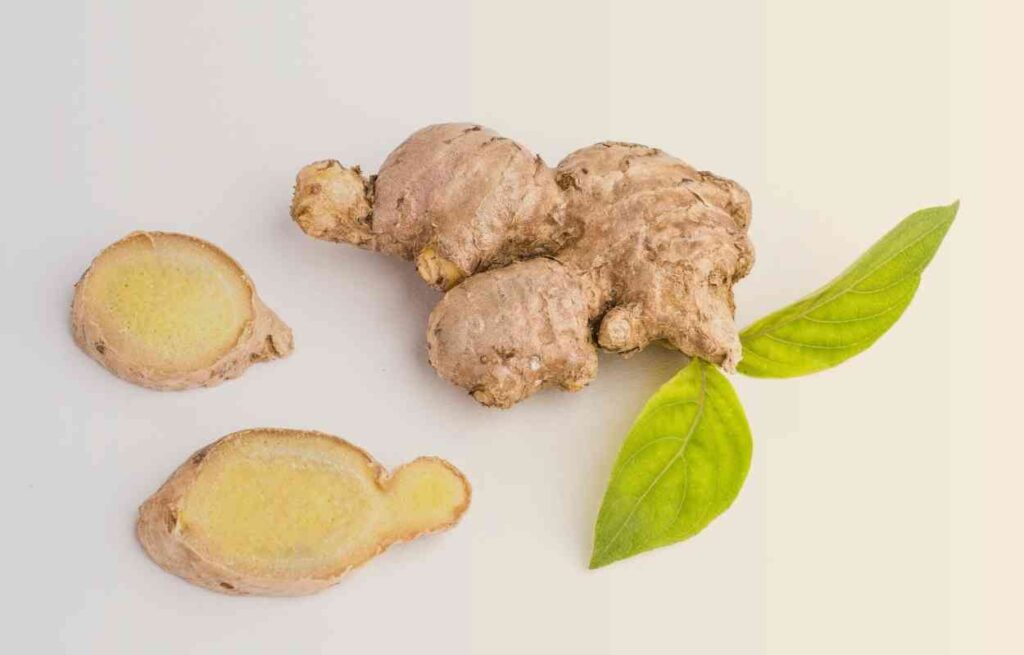Does Ginger Have Capsaicin?
Ginger has long been regarded as a versatile spice, recognized for its fragrant and spicy flavor, which lends depth and warmth to a variety of cuisines.
But, in the midst of its success, a common concern arises: does ginger have any resemblance to capsaicin, the molecule responsible for the searing heat found in chili peppers?
Does Ginger Have Capsaicin? No, ginger does not contain capsaicin. While ginger and capsaicin share some similarities in terms of their interaction with receptors and spiciness, ginger contains a compound called gingerol, which gives it its characteristic pungency and flavor. Capsaicin is found in chili peppers and is responsible for their fiery heat.

Does Ginger Have Capsaicin?
To understand the relationship between ginger and capsaicin, it’s necessary to first investigate the chemical elements that contribute to ginger’s distinct flavor profile.
Ginger’s flavor is enhanced by a variety of chemicals, including zingiberene, ß-sesquiphelandrene, and ar-curcumene.
Capsaicin, on the other hand, is the hot element found in chili peppers that is notorious for setting our taste senses on fire.
Ginger does not include capsaicin; while ginger and capsaicin share some properties in terms of taste receptor actions and spiciness, they are different substances.
Capsaicin, the fiery component found in chili peppers that ignites our taste senses, is found in ginger, while gingerol, a chemical found in ginger, contributes to its distinct flavor and pungency.
So, if you’re searching for the strong heat associated with capsaicin, ginger isn’t for you.
Gingerol Is a Pungent Compound Found in Ginger
While ginger and capsaicin may not appear to be similar at first appearance, they actually have a common ingredient in gingerol.
The chemical found in ginger “Gingerol“, is similar to capsaicin and piperine. Gingerol differs from capsaicin in its method of interacting with the vanilloid receptor.
Gingerol, unlike capsaicin, does not provide an immediate sensation of pain. Instead, it functions as a pain reliever, alleviating discomfort without creating it.
This intriguing feature distinguishes ginger from other spicy substances and puts it a natural alternative to standard painkillers and anti-inflammatory medications.
Anti-Inflammatory Properties of Ginger
Gingerols, the active chemicals in ginger, have anti-inflammatory actions by inhibiting the enzyme cyclooxygenase (COX).
This mechanism is comparable to those of common anti-inflammatory drugs such as aspirin and ibuprofen. Gingerols can help reduce inflammation in the body by suppressing both COX-1 and COX-2.
This potentially beneficial action may be especially advantageous for people suffering from illnesses such as arthritis, where persistent inflammation contributes significantly to pain and discomfort.
Ginger’s Absence of Capsaicin
Although ginger has some resemblance to capsaicin, it is vital to note that ginger does not contain capsaicin.
Gingerols, the molecules that make up its distinct flavor profile, are responsible for the spice. Gingerol is responsible for the first pungency and spiciness of ginger, which distinguishes it from capsaicin.
The Effect of Heating on the Composition of Gingerol
Surprisingly, the composition of gingerol varies according to how ginger is cooked. When ginger is heated, the molecule gingerol undergoes a chemical transformation known as a reverse aldol reaction, producing zingerone.
This process not only softens the strong flavor of ginger but also adds a lovely spicy but sweet scent.
So, the next time you have a warm cup of ginger tea or a ginger-infused meal, remember that the heating process has transformed gingerol into a more varied flavor profile.
Drying and Shogaols: Upping the Spice
The spiciness of ginger can be enhanced further by methods such as drying or boiling. Gingerol dehydrates and changes into chemicals known as shogaols when treated to these procedures.
Surprisingly, shogaols are roughly twice as spicy as gingerol, giving dried ginger an extra bite. This discovery explains why dried ginger has a more intense and hot punch than its fresh counterpart.
Ginger’s Versatility and Pleasure
Aside from its distinct qualities and potential health benefits, ginger is a versatile spice that can be enjoyed in a variety of meals throughout the year.
Ginger gives a lovely depth of flavor that transcends seasonal restrictions, whether used in savory stir-fries, warming soups, or delectable desserts.
So, embrace ginger’s adaptability and experiment with the endless culinary options it provides.
Ginger’s Potential for Pain Relief
Ginger’s pain-relieving capabilities make it a promising alternative to standard medications. Animal studies have demonstrated that ginger helps to relieve pain when exposed to heat.
However, more studies and human studies are needed to properly grasp the degree of ginger’s pain-relieving capacity and its influence on humans.
Conclusion
To summarize, while ginger does not contain capsaicin, the molecule gingerol resembles capsaicin. Gingerol, the pungent chemical in ginger, interacts with the vanilloid receptor in a novel way, acting as a pain blocker rather than an acute pain inducer.
Ginger’s anti-inflammatory effects, potential blood-thinning impact, and adaptability in a variety of culinary creations make it an intriguing spice to experiment with.
So, embrace ginger’s aromatic charm and think about incorporating it into your daily routine for its flavor as well as its potential health advantages.
FAQs:
Is Ginger a Good Alternative to Painkillers?
Yes, ginger has been found to have pain-relieving properties and can serve as a natural alternative to traditional painkillers. The compound gingerol in ginger acts as a pain blocker, providing relief without initially causing pain.
Does Ginger Contain Capsaicin?
No, ginger does not contain capsaicin. The spicy kick in ginger comes from gingerols, not capsaicin.
Can Ginger Help with Inflammation?
Yes, ginger has anti-inflammatory effects. The gingerols in ginger inhibit the enzyme cyclooxygenase (COX), which is involved in inflammation. Ginger can be beneficial in reducing inflammation, especially in conditions like arthritis.
Does Heating Ginger Change Its Properties?
Yes, heating ginger leads to a chemical transformation of gingerol into zingerone, resulting in a softer pungent taste and a spicy yet sweet aroma. Heating ginger can enhance its flavor and aroma.
Is Dried Ginger Spicier than Fresh Ginger?
Yes, dried ginger is spicier than fresh ginger. Drying or slightly heating ginger causes gingerol to dehydrate and form shogaols, which are approximately twice as spicy as gingerol. This intensifies the spiciness of dried ginger compared to fresh ginger.
Contents
- Does Ginger Have Capsaicin?
- Gingerol Is a Pungent Compound Found in Ginger
- Anti-Inflammatory Properties of Ginger
- Ginger’s Absence of Capsaicin
- The Effect of Heating on the Composition of Gingerol
- Drying and Shogaols: Upping the Spice
- Ginger’s Versatility and Pleasure
- Ginger’s Potential for Pain Relief
- Conclusion
- FAQs:
